EVALUATION OF NOVEL TECHNIQUES IN DBS

WHAT ARE DBS?
Los DBS (dried blood spots or dried blood samples) are a method of collecting, transporting, and storing blood samples that is very useful in research and disease diagnosis.
Instead of collecting blood samples in traditional test tubes, which require refrigeration, take up more space, and cannot be stored for too long, DBS involves placing two drops of blood on a special filter paper card and letting them dry. Once the sample is dry, it can be stored at room temperature and easily transported without the need for refrigeration.
This method is not new; the idea of collecting biological samples on a cellulose card originated almost a century ago. However, more research is still needed to establish standardized protocols and optimize its potential use.
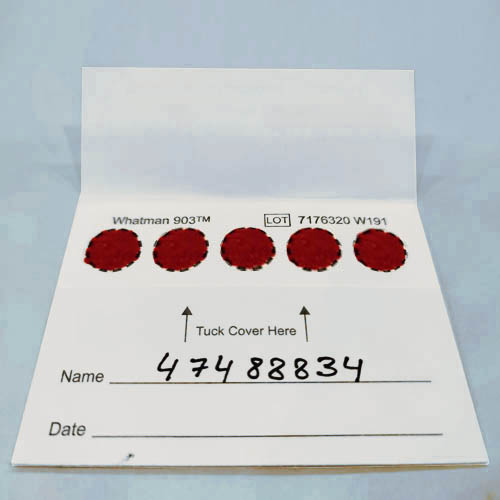
WHAT ADVANTAGES DO DBS OFFER?
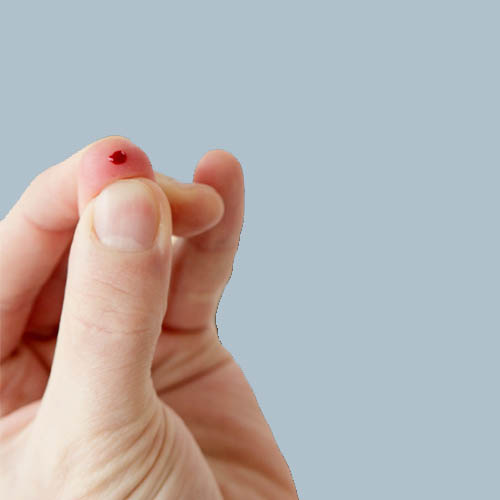
Advantages of Sample Collection: Less invasive process
Instead of requiring the blood sample to be extracted through venipuncture (using a needle to draw venous blood), DBS can be prepared with a couple of drops of blood obtained by a small prick on the fingertip or heel (in the case of infants), obtaining capillary blood. There are situations where extracting blood through venipuncture can be challenging, such as in newborns, the elderly, or chronic patients; in these cases, DBS is a good alternative. Additionally, traditional blood extraction must be performed by a healthcare professional, whereas in DBS, the prick is so simple (similar to a needle for blood glucose measurement) that untrained personnel or even the patient can perform it, allowing for self-sampling, providing convenience and privacy to the patient.
Ease of Storage and Transport: Remote locations
The DBS cards can be stored at room temperature and transported without the need for refrigeration, making them especially useful in environments where access to refrigeration is limited. Therefore, their use allows for sample collection in remote locations and their shipment to central laboratories for analysis. This is a significant advantage when it comes to obtaining samples from remote areas in developing countries, communities with limited access to healthcare facilities, or populations at risk of exclusion. Additionally, like a traditional sample, DBS can be frozen. For research purposes, a large number of samples may be required, and since DBS cards take up much less space than a traditional test tube, many more DBS cards can be stored in freezers, such as those in a biobank. It's worth noting that due to their ease of storage, it is more feasible to keep DBS cards in the laboratory for a longer time, which is useful when repeating the test to verify the result or for investigating another diagnosis after some time.
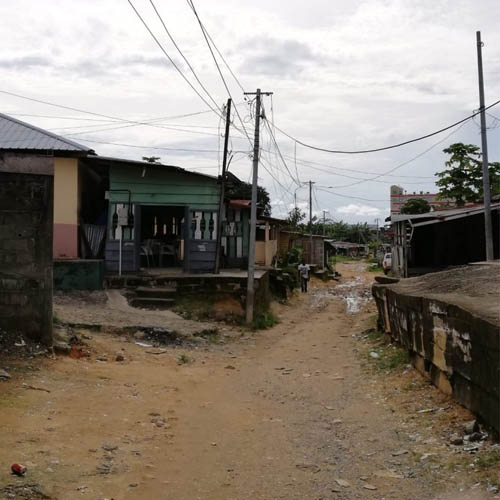
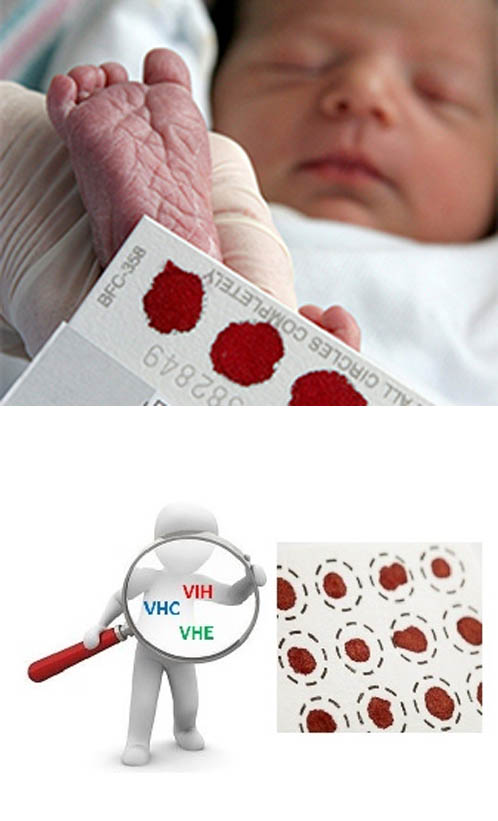
Flexibility in DBS Analysis: Beyond Diagnosis
DBS offer versatility in the analysis of various health aspects. They serve not only for diagnosing infectious diseases but also play a crucial role in identifying genetic disorders and facilitating drug monitoring. DBS have been used for decades for the detection of HIV in developing countries and remote regions where access to traditional laboratory tests is limited. Other viral infections such as hepatitis C and B, as well as parasitic infections like Chagas disease or malaria, can also be detected. DBS supports a spectrum of testing methods, ranging from molecular techniques like PCR to assessments of antigen or antibody levels. The latter also allows determining a child's vaccination status to know if they are immunized against potentially preventable diseases through vaccination.
DBS are often used for genetic analysis, including the detection of hereditary metabolic diseases and neurodevelopmental disorders in newborns.The non-invasive collection of DBS samples at birth ensures timely detection and intervention.
Beyond disease diagnosis, DBS finds a growing role in the monitoring of drug levels, particularly in patients with chronic conditions. Its less invasive nature compared to traditional blood collection allows for more frequent and cost-effective monitoring, marking a significant advancement in healthcare practices.
WHAT ARE THE DRAWBACKS OF DBS?
There are some drawbacks to the use of DBS. Since dried blood samples may be less stable than liquid blood samples, errors in results may occur if the sample is not collected and stored correctly. Additionally, the amount of blood that can be collected with DBS is limited, which can be a concern in cases where large blood volumes are needed for certain tests. Another issue is that most diagnostic tests do not consider the use of DBS, and the cutoff points they use to distinguish between a negative and a positive result are not adapted to the DBS format. Finally, DBS requires preparation before the sample is introduced into the diagnostic machine; this process is not yet standardized, and personnel must be trained to obtain reliable results.
Despite these disadvantages, DBS are a valuable tool in research and disease diagnosis, especially in environments where access to refrigeration is limited or where sample collection in remote locations is required. With the right technology and proper procedures for sample collection, storage, and processing, DBS can provide accurate and reliable results that are comparable to those obtained with traditional liquid blood samples, as they have demonstrated high sensitivity when processed properly.
This is why it's so important to continue researching the use of DBS, given its potential to improve the diagnosis and treatment of diseases, especially in remote regions and developing countries. Additionally, research into the use of DBS can also lead to new applications in areas such as monitoring treatment response and tracking the progression of chronic diseases.
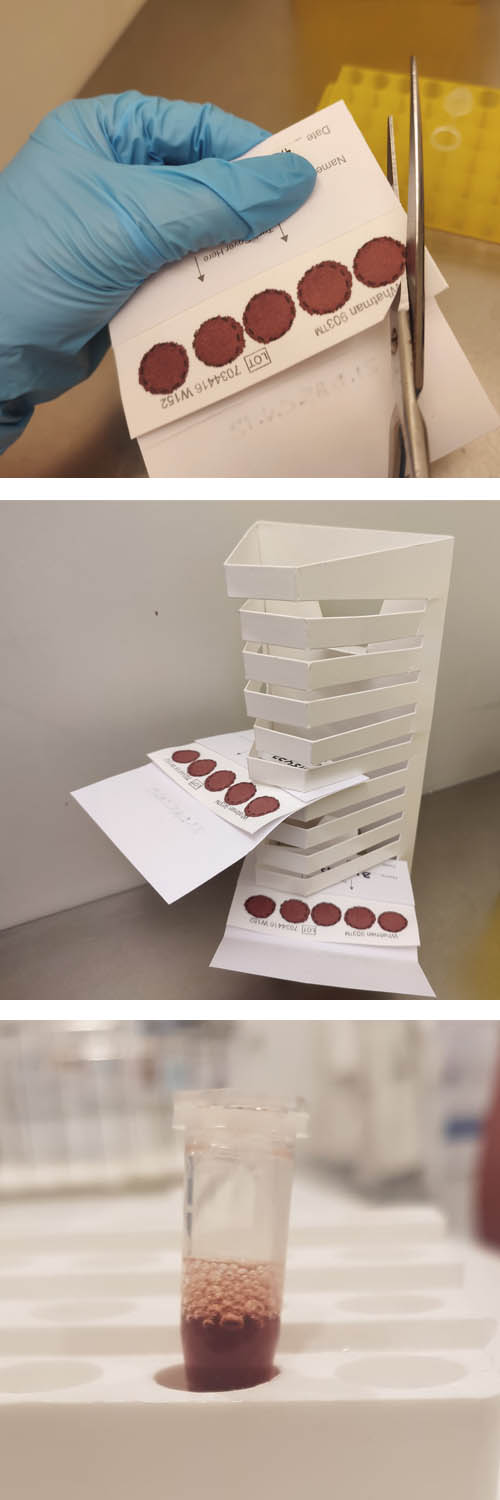
HOW IS A DBS PROCESSED?
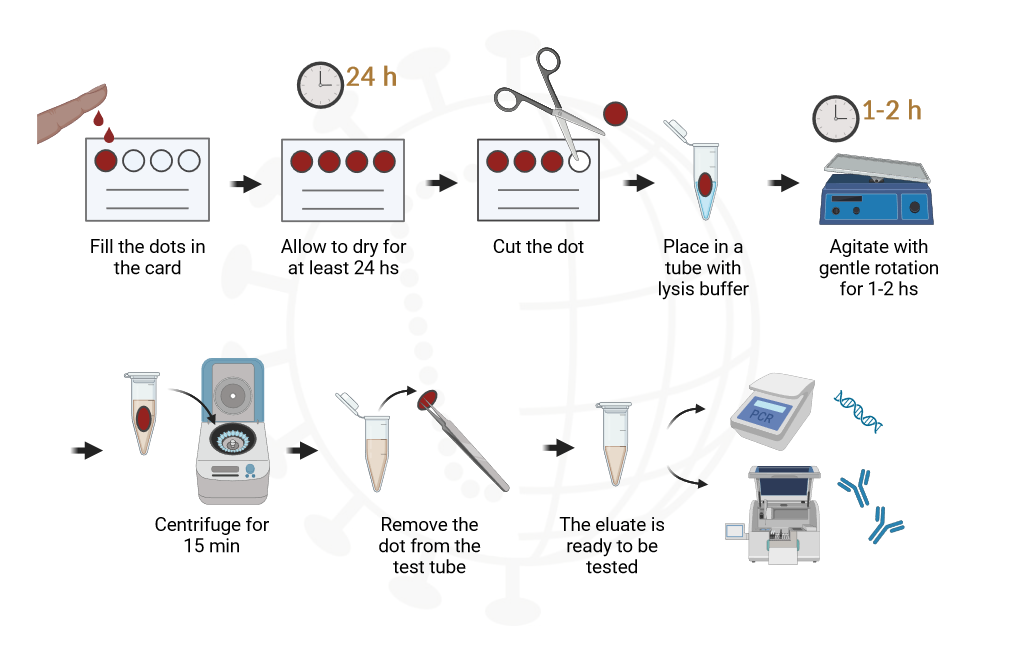
DBS processing in EpiMolVIH. Figure created with BioRender.com
The processing of DBS may vary among laboratories, but the goal is the same: to obtain an eluate with the analytes intended for testing from the DBS dot to perform the relevant diagnostic tests.
The basic steps for processing are the following:
1) Deposit a few drops of blood on each dot of the special filter paper until filled (each dot is indicated by a circle). It can be filled with capillary blood from a fingerstick or with a pipette if blood is extracted.
2) Let the sample dry for at least 24 hours. Once dry, it can be stored at room temperature or refrigerated. It is preferable to store it in an airtight bag along with a silica desiccant packet to prevent moisture from affecting the sample quality.
3) Trim the dot while maintaining sterility: use gloves and disinfect the punch or scissors.
4) To extract the sample from the paper support, the trimmed dot is immersed in a tube with lysis buffer and gently agitated for at least 1 hour. The sample can also be centrifuged.la muestra. This way, the eluate now contains the analytes intended for testing.
5) Finally,remove the paper dot, and the sample is ready to be processed using any immunoassay or molecular technique.
WHAT DBS PROJECTS ARE CURRENTLY UNDERWAY AT EPIMOLVIH?
In EPIMOLVIH have been working with DBS for years to apply the full potential of this sample format for clinical application and improve the diagnosis and monitoring of patients, especially in vulnerable populations and developing countries:
Studying DBS use for the detection of various infectious diseases such as HIV, HCV, and Chagas, obtaining valuable data for their application in diagnosis. This includes comparing sensitivity and specificity between DBS and traditional samples and establishing optimal cut-off points for the detection of RNA, antigens, or antibodies in each serological or molecular technique used.
Evaluating the use of DBS to determine the vaccination status of children against vaccinable pathogens such as measles, mumps, rubella, tetanus, diphtheria, and pertussis, establishing optimal cut-off points for such studies.
Studying the use of DBS in the detection and quantification of different immune markers or monitoring immune response.
Investigating the effect of storage time at room temperature on the viability of DBS for diagnostic use, providing information on the best storage conditions.
You can check our projects and advances in the field of DBS and all our publications in scientific journals to date.
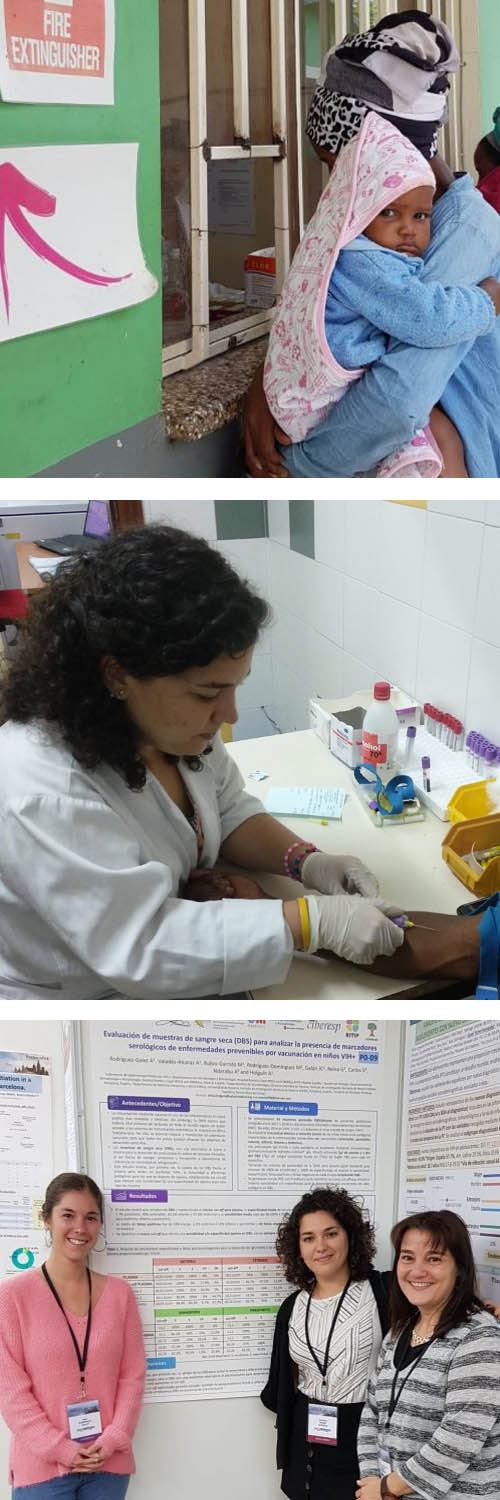
You can contribute to advancing research on DBS and enhance diagnostic accessibility for individuals in developing countries, those with limited healthcare access, and populations facing heightened risks or vulnerabilities.
Interested in collaborating?
Join our Teaming group with a monthly contribution of just one euro or make a donation as an individual or company at your discretion.
Together for the advancement in DBS research!
Early detection method of HIV in children under 18 months.
Dr. África Holguín
With two drops of dried blood collected on a special filter paper card, HIV can be diagnosed in children under 18 months using molecular techniques. An inexpensive and simple method, perfect for countries with limited resources where the highest number of cases of pediatric HIV is concentrated.



